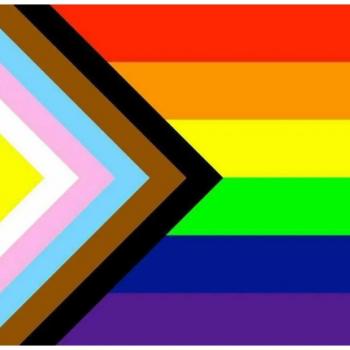I haven’t had time to write much lately. I’m studying for a test on Hegel’s Phenomenology of Spirit, preparing to teach a class on Buddhism, and trying to keep up on a couple dozen other projects (including an interesting back-and-forth on Socrates/world as illusion with Steven), so time is has been lacking.
One thing that I’ve been discussing with a friend here is the issue of selfhood in Buddhism, which famously seems to reject that there is a ‘self’ (atta in Pali, atman in Sanskrit). To say that it is an incredibly dicey subject would be an enormous understatement. It has been at the heart of a huge amount of discussion in both Eastern and Western philosophy, and is by no means clearly answered anywhere.
I’ll amend this post with some introductory reading on the topic – but for now I’ll just toss you into my most recent thoughts on the issue:
My friend tells me: “Your comments vis-a-vis personhood immediately brought to mind Hume, and I would challenge them up and down all the way (e.g., ***WHAT*** wants to cling to some definiteness, and ***based on what IT REALLY IS, HOW does it do so and WHY does it do so??????).“
And my reply:
The simplest example I’ve heard to illustrate this is the janitor’s mop. A janitor one day said something like, “I’ve had this mop for over 20 years.” His hearer, in awe, replied, “How could you make a mop last 20 years?!” The janitor replied, “Well, one year I replace the head, and the next year I replace the handle, then the head, then the handle, and so on.”
This simple old mop is nothing more than a head and a handle. It is held together by its form, a bond which breaks down over time just as its parts do.
I think Hume uses the example of a ship, asking if we replace one plank on it, “is it the SAME ship? How about if we dry-dock it and replace every piece of wood and iron? Same ship?”
People are more complicated. Beyond mere physicality are all the mental constituents, but, under analysis, we tend to find that they, like the mop and handle, are coming, staying for a while, and then being replaced. We never find a ‘substance/self’ controling the whole thing which itself is beyond this process. There is no ‘mopness’ in the mop, above and beyond the two peices, which has remained intact over the 20 years. This raises the question of ‘what IT REALLY IS’. I think the answer is that what it really is is underdetermined by its mere physicality. It requires *our* interpretation, our label – what it is is what it is *for us* (starting to sound like Hegel…).
The same goes for people. Who or what we are is underdetermined, even including our mental sides. The problem may be that we are caught up by our language, with the subject/predicate break. We think that the subject must refer to some ‘thing’. I think this is part of Wittgenstein’s work – but I think also that Hume rejected this. The example that comes to mind is, “it is raining.” The ‘it’ is just a kind of posturing/pointing, but refers to no definite entity when we examine it. It is a true proposition only *for us* when water is coming from above. The same goes for language used in describing people, including ourselves.
‘How’ things come together and are clung to is a good question. And in my mind there are many suitable explanations, from something strictly naturalistic: survival and the rise of mental states and language, to something more privileging the mental: a more ‘original’ mental clinging to perceptions and later concepts, which, due to their changing nature, led to dissatisfaction and new and ever more sophisticated concepts to be clung to. But, like most ‘hows’ (how to build a table, how to fix the car), different explanations may not be exclusively True.
‘Why’ is another one open to multiple explanations. For me it is either 1) the wrong kind of question to ask (like the man struck by the poisoned arrow), or 2) a question which is best satisfied with a mytho-poetic fable. The problem with the latter answer is that, as a fable, it is meant to point beyond itself as a guide to life but it is easily clung to as an (exclusive) account of Truth.
Below are a couple comparative philosophy papers that get into Western/Buddhist theories of self if you’re interested digging deeper. In the first the author starts with Hume, proposes limitations to Hume’s thought, and introduces Buddhism to overcome those limitations. The second I haven’t read, but it’s by a reputable philosopher (he just published a book on the topic called ‘Empty Persons’).
(1993) THE NO-SELF THEORY: HUME, BUDDHISM, AND PERSONAL IDENTITY
(1997) Buddhist reductionism











